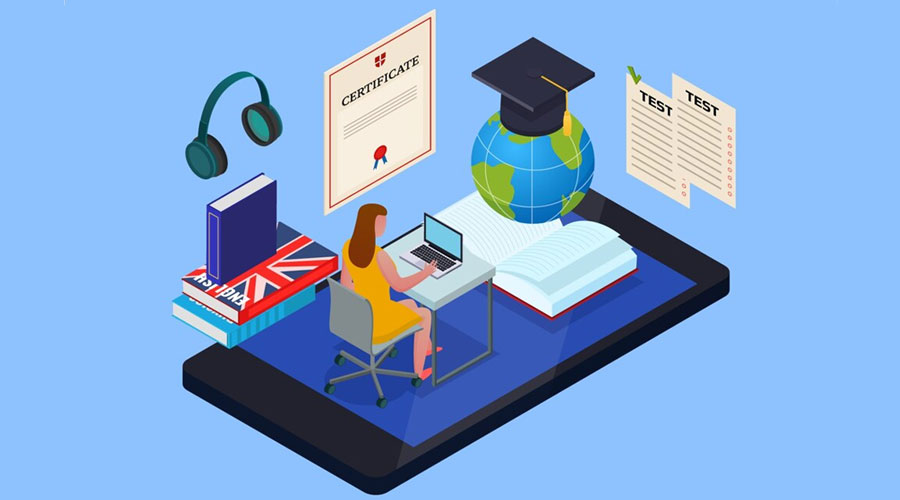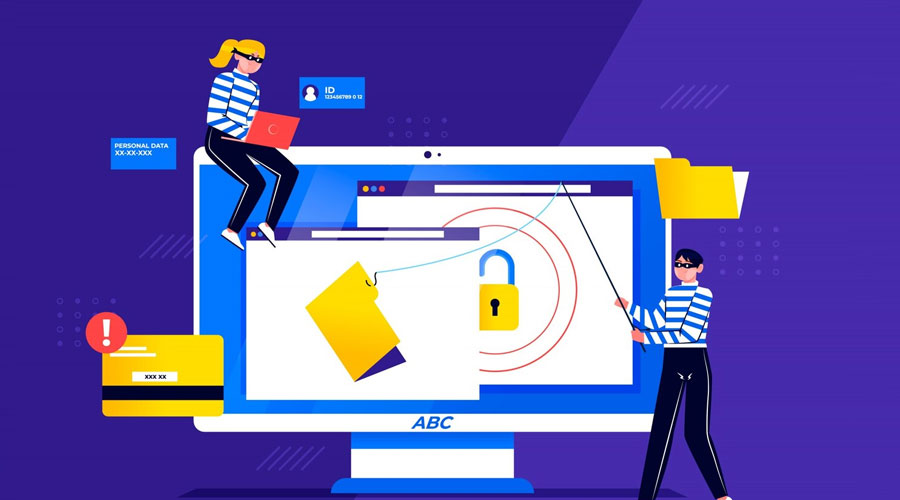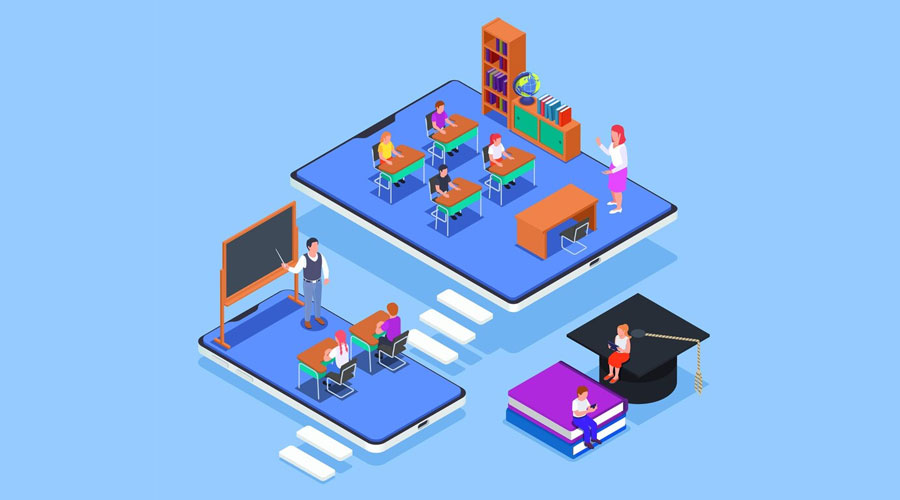Table of Contents
Introduction to Education App Development
In the rapidly evolving landscape of education, where traditional methodologies are meeting the challenges of the digital age, the advent of education app development has emerged as a transformative force. With the proliferation of smartphones, tablets, and the ubiquity of the internet, the education sector has witnessed a paradigm shift. This article aims to delve deeper into the multifaceted realm of education app development, exploring its historical context, the evolution of educational technology, and the profound impact these applications have on modern learning.
The Historical Context of Education Technology:
The roots of education technology can be traced back to the early 20th century, with the introduction of educational films and radio broadcasts. However, it wasn’t until the latter half of the century that computers found their way into classrooms, marking the beginning of the digital era in education. The 1980s saw the advent of educational software, laying the groundwork for the interactive and personalized learning experiences we witness today.
The Evolution of Educational Technology:
The 21st century witnessed an unprecedented surge in technological advancements, and education was quick to embrace the opportunities presented. Interactive whiteboards, online learning platforms, and multimedia resources became integral components of modern classrooms. However, it was the rise of smartphones and the subsequent boom in mobile applications that truly revolutionized education.
Education App Development: A Game-Changer in Learning:
- Accessibility Redefined: Education apps have redefined the accessibility of learning resources. Students no longer need to rely solely on physical textbooks or be confined to the four walls of a classroom. With education apps, a universe of information is at their fingertips, accessible anytime and anywhere.
- Personalized Learning Experiences: Traditional classrooms often struggle to accommodate the diverse learning styles and paces of individual students. Education apps, however, leverage adaptive learning algorithms to tailor content based on the unique needs and capabilities of each learner. This personalization fosters a more effective and enjoyable learning journey.
- Engagement Through Interactivity: Incorporating gamified elements, quizzes, and multimedia content, education apps make learning inherently interactive. This engagement not only sustains the attention of learners but also enhances comprehension by catering to different learning modalities.
- Real-time Assessment and Feedback: Education apps provide a departure from the delayed feedback inherent in traditional assessment methods. Real-time assessments not only help learners identify areas of improvement immediately but also enable educators to adapt their teaching strategies dynamically.
Challenges and Opportunities in Education App Development:
While education app development holds immense promise, it is not without its challenges. The digital divide, concerns about the quality of online content, and issues related to data security and privacy are significant hurdles that developers and educators must address. Bridging the gap between technology and education requires a collaborative effort to ensure that the benefits of education app development are inclusive and equitable.
- The Digital Divide: Despite the widespread adoption of smartphones, a digital divide still exists, with disparities in access to technology and the internet. Education app developers must strive to create solutions that are inclusive, considering the diverse socio-economic backgrounds of learners.
- Quality Assurance: The success of an education app hinges on the quality of its content. Ensuring that educational materials are accurate, up-to-date, and aligned with curricular standards is crucial. Additionally, developers must continually update content to keep pace with evolving educational methodologies.
- Data Security and Privacy Concerns: Education apps deal with sensitive information, including personal and academic data. Implementing robust security measures and adhering to data protection regulations are imperative to build trust among users and safeguard their privacy.
The Future of Education App Development:
As we navigate the uncharted territories of education app development, the future promises even more innovation and evolution. Artificial intelligence (AI), augmented reality (AR), and virtual reality (VR) are poised to play pivotal roles in shaping the next generation of education apps.
- Artificial Intelligence (AI) in Education: AI has the potential to revolutionize education app development by providing intelligent, adaptive learning experiences. Machine learning algorithms can analyze user data to understand individual learning patterns, enabling apps to tailor content and recommendations with unprecedented precision.
- Augmented Reality (AR) and Virtual Reality (VR): AR and VR technologies have the capability to transport learners to immersive educational environments. From virtual field trips to hands-on simulations, these technologies offer experiential learning opportunities that transcend the limitations of traditional classrooms.
Key Features of Successful Educational Apps
In the ever-evolving landscape of education technology, the success of educational apps is not solely dependent on the content they deliver. Rather, it is a combination of factors that contribute to their effectiveness and popularity among users. In this comprehensive exploration, we will delve into the key features that distinguish successful educational apps, making them invaluable tools in the modern learning environment.
- User-Centric Design: The foundation of any successful educational app lies in its user-centric design. The interface should be intuitive, providing a seamless experience for both students and educators. An app that is easy to navigate enhances user engagement and ensures that users can focus on learning rather than grappling with complex functionalities.
- Adaptive Learning Paths: One-size-fits-all approaches are becoming obsolete in education. Successful educational apps embrace adaptive learning, tailoring content and progression based on individual student needs and learning styles. Through data-driven insights, these apps can adjust the difficulty level, pacing, and content to optimize the learning journey for each user.
- Gamification Elements: Introducing gamification elements into educational apps adds an extra layer of engagement. Features such as quizzes, challenges, and rewards make learning fun and motivate students to actively participate. Gamification not only enhances the overall user experience but also fosters a sense of accomplishment, driving continued usage.
- Multimedia Integration: To cater to diverse learning preferences, successful educational apps integrate multimedia elements such as videos, animations, and interactive simulations. Visual and auditory aids enhance comprehension and retention, providing a well-rounded learning experience beyond traditional text-based content.
- Real-Time Feedback Mechanisms: Immediate feedback is crucial for effective learning. Educational apps that incorporate real-time feedback mechanisms allow students to assess their performance instantly. This feature not only helps in identifying areas that need improvement but also encourages a sense of accomplishment when users successfully master a concept.
- Progress Tracking and Reporting: Transparency in learning progress is essential for both students and educators. Educational apps with robust progress tracking and reporting functionalities enable users to monitor their advancement through the curriculum. For educators, these features provide valuable insights into student performance, facilitating targeted intervention when necessary.
- Collaborative Learning Features: Education is increasingly becoming a collaborative endeavor. Successful educational apps incorporate features that promote interaction and collaboration among students. Discussion forums, group projects, and collaborative assignments foster a sense of community, simulating the social aspects of traditional classroom settings.
- Offline Accessibility: Recognizing the importance of accessibility, especially in regions with limited internet connectivity, successful educational apps offer offline access to content. Users can download lessons, quizzes, or other learning materials to continue their studies without the need for a constant internet connection.
- Customization and Personalization: Acknowledging the diversity in learning styles, successful educational apps provide customization options. Users should have the ability to tailor their learning experience, choosing preferences such as font size, color schemes, and even the order in which they consume content. Personalization enhances user satisfaction and engagement.
- Cross-Platform Compatibility: In a world where users switch between devices seamlessly, educational apps that offer cross-platform compatibility ensure a consistent experience across various devices. Whether accessed on a smartphone, tablet, or computer, the app should maintain functionality and synchronize user progress.
Data Security and Privacy in Educational App Development
In the rapidly evolving landscape of education app development, where technology intersects with pedagogy, the paramount importance of data security and privacy cannot be overstated. As educational institutions increasingly adopt digital solutions to enhance learning experiences, the need to safeguard sensitive information becomes a critical consideration. This article explores the multifaceted aspects of data security and privacy in educational app development, examining the challenges, best practices, and the role of regulations in ensuring a secure and trustworthy learning environment.
The Stakes of Data Security in Educational Apps:
- Student Information: Educational apps inherently deal with a treasure trove of student information, ranging from personal details to academic records. Protecting this data is not only a legal obligation but also a moral imperative. Breaches in data security can lead to severe consequences, including identity theft, unauthorized access, and compromise of academic integrity.
- Financial Data: Many educational apps involve financial transactions, such as payment for courses, subscriptions, or in-app purchases. Securing financial data is crucial to prevent fraud and maintain the trust of users. Any vulnerability in this area can have far-reaching consequences for both users and app developers.
- User Behavior Analytics: Educational apps often leverage user behavior analytics to personalize content and enhance the learning experience. While this can be a powerful tool, it also necessitates responsible data handling. Striking a balance between personalization and privacy is a delicate task that requires robust security measures.
Challenges in Ensuring Data Security:
- Cybersecurity Threats: The educational sector is an attractive target for cybercriminals due to the wealth of sensitive information it holds. Phishing attacks, ransomware, and other cyber threats pose a constant challenge to the security of educational apps.
- Compliance with Regulations: Educational app developers must navigate a complex landscape of data protection regulations. Achieving compliance with laws such as the Family Educational Rights and Privacy Act (FERPA) in the United States or the General Data Protection Regulation (GDPR) in the European Union adds an additional layer of complexity to app development.
- User Awareness: Often overlooked, user awareness plays a significant role in data security. Users need to be educated about the importance of strong passwords, the risks of sharing sensitive information, and the permissions they grant to the app. Lack of awareness can make users susceptible to social engineering attacks.
Best Practices for Data Security in Educational App Development:
- Encryption: Implementing robust encryption mechanisms is fundamental to protecting data in transit and at rest. This ensures that even if unauthorized access occurs, the data remains unintelligible without the proper decryption keys.
- Two-Factor Authentication (2FA): Adding an extra layer of authentication through 2FA enhances security by requiring users to provide two forms of identification. This simple yet effective measure significantly reduces the risk of unauthorized access.
- Regular Security Audits: Conducting regular security audits and vulnerability assessments is essential for identifying and mitigating potential risks. This proactive approach helps developers stay one step ahead of emerging threats.
- Data Minimization: Adopting a principle of data minimization involves collecting only the necessary information required for the app’s functionality. Limiting the data footprint reduces the potential impact of a security breach.
- Privacy by Design: Integrating privacy considerations into the design and development process, known as Privacy by Design, ensures that data protection is not an afterthought but an integral part of the app’s architecture.
Accessibility and Inclusivity in Educational App Design
In the dynamic landscape of education app development, the principles of accessibility and inclusivity have become central to creating a truly impactful and transformative learning experience. As technology continues to shape the future of education, it is essential to ensure that educational apps are designed with a focus on making learning accessible to all, regardless of physical abilities, learning styles, or geographical locations. In this comprehensive guide, we will explore the critical aspects of accessibility and inclusivity in educational app design, providing insights into best practices, challenges, and the profound impact such considerations can have on learners worldwide.
Understanding Accessibility in Educational App Design:
Accessibility in educational app design refers to the intentional design and development of applications that can be easily accessed, understood, and used by individuals with varying abilities and disabilities. This extends beyond traditional notions of physical disabilities to include cognitive, visual, auditory, and motor impairments. A truly accessible educational app ensures that every user, regardless of their unique needs, can engage with the content effectively.
- Designing for Different Abilities: Educational apps should be designed to accommodate a wide range of abilities. This includes providing alternative means of interaction, such as voice commands for those with motor impairments or text-to-speech functionality for individuals with visual impairments. Consideration should also be given to color contrast and font size to enhance readability for users with visual challenges.
- User Interface (UI) and User Experience (UX): An intuitive and user-friendly interface is critical for accessibility. Clear navigation, well-organized content, and logical flow contribute to a positive user experience. Icons and buttons should be easily distinguishable, and interactive elements should be designed to provide feedback that is not solely reliant on visual cues.
- Adaptive Learning Pathways: Educational apps should incorporate adaptive learning pathways to cater to diverse learning styles and paces. Customizable settings, such as adjustable reading speeds, font preferences, and language options, empower users to tailor the app to their individual needs.
- Captioning and Transcripts: For video and audio content, providing captions and transcripts is essential for users with hearing impairments. This ensures that all learners can access the information presented, promoting an inclusive learning environment.
Understanding Inclusivity in Educational App Design:
Inclusivity in educational app design goes beyond addressing physical and cognitive challenges. It encompasses a commitment to creating an environment where learners of all backgrounds, cultures, and socio-economic statuses feel welcome and represented. Inclusive design promotes a sense of belonging and ensures that educational content resonates with a diverse audience.
- Cultural Sensitivity and Representation: Educational content should be culturally sensitive and inclusive, reflecting a diverse range of perspectives and experiences. App developers should actively seek to represent various cultures, ethnicities, and backgrounds in the content and imagery used within the app.
- Language Inclusivity: Language plays a crucial role in inclusivity. Educational apps should be designed to support multiple languages, allowing users from different linguistic backgrounds to access content in their preferred language. This is particularly important for global reach and impact.
- Affordability and Accessibility: Inclusivity also extends to economic considerations. Educational apps should strive to be affordable or, in some cases, free, to ensure that financial constraints do not hinder access to quality education. This is especially relevant in regions with lower socio-economic status.
- Collaborative and Social Learning Features: Foster inclusivity through collaborative and social learning features. Discussion forums, group projects, and interactive elements that promote peer-to-peer learning contribute to a sense of community and shared knowledge among users.
Challenges and Solutions:
While the principles of accessibility and inclusivity are clear, educational app developers often face challenges in implementing them effectively. Overcoming these challenges requires a combination of awareness, collaboration, and a commitment to continuous improvement.
- Awareness and Training: Many developers may lack awareness of the specific needs of users with disabilities. Providing training on accessibility standards and inclusive design practices is crucial. This awareness should extend to content creators, ensuring that educational materials are developed with inclusivity in mind.
- Technological Constraints: Technological limitations may pose challenges in implementing certain accessibility features. However, advancements in technology, such as the integration of artificial intelligence and machine learning, offer opportunities to overcome these constraints. Developers should stay abreast of technological innovations and leverage them to enhance accessibility.
- Testing and Feedback: Rigorous testing is essential to identify and address accessibility issues. Engaging users with diverse abilities in the testing phase provides valuable feedback on the app’s usability. Regular updates and a commitment to addressing user feedback contribute to ongoing improvements in accessibility.
: Successful Education App Implementations
In the dynamic landscape of education technology, several success stories stand out as exemplary models of effective education app implementations. These case studies showcase the transformative impact of well-designed and strategically deployed education apps. Examining these success stories provides valuable insights into the key factors contributing to their success and offers inspiration for future developers and educators.
1. Duolingo: Making Language Learning Fun and Accessible
Background: Duolingo, a language-learning platform, has revolutionized the way people approach learning new languages. Launched in 2011, Duolingo quickly gained popularity due to its innovative approach, combining gamification and education.
Key Features:
- Gamified Learning: Duolingo employs game-like elements to make language learning fun and engaging. Users earn points, complete levels, and unlock achievements, creating a sense of accomplishment that keeps them motivated.
- Adaptive Learning: The app adapts to the user’s proficiency level, providing personalized lessons based on their strengths and weaknesses. This ensures an efficient and tailored learning experience.
- Accessibility: Duolingo is accessible for free, with an option to remove ads through a premium subscription. This accessibility has contributed to its widespread adoption globally.
Success Factors:
- Engagement Through Gamification: By integrating gamification elements, Duolingo successfully engages users, encouraging them to consistently return to the app for short, daily learning sessions.
- Community Building: Duolingo’s community features enable users to interact, compete, and support each other in their language-learning journey. This sense of community enhances user retention and motivation.
- Data-Driven Iteration: Duolingo uses data analytics to track user progress and preferences. This data-driven approach allows continuous improvement, ensuring the app remains effective and relevant.
2. Khan Academy: Democratizing Education Through Online Learning
Background: Khan Academy, founded by Salman Khan in 2008, is a non-profit educational platform that offers a wide range of instructional videos and practice exercises across various subjects.
Key Features:
- Comprehensive Content Library: Khan Academy provides a vast library of instructional videos covering subjects from mathematics and science to humanities. The content is free to access, making quality education available to anyone with an internet connection.
- Adaptive Learning Paths: The platform adapts to individual learning needs, offering personalized learning paths based on user performance. This ensures that students receive targeted instruction to address their specific knowledge gaps.
- Progress Tracking: Khan Academy allows students, teachers, and parents to track progress through detailed analytics. This feature facilitates informed decision-making regarding the effectiveness of learning strategies.
Success Factors:
- Non-Profit Model: Khan Academy’s commitment to providing free, high-quality education aligns with its non-profit model. This approach has garnered support from philanthropists, enabling the platform to remain accessible to a broad audience.
- Teacher Empowerment: Khan Academy empowers teachers by providing tools to monitor and support student progress. This collaborative approach enhances the traditional classroom learning experience.
- Global Impact: The platform’s global reach has made it a valuable resource for students around the world, breaking down barriers to education and fostering a culture of continuous learning.
Thanks for reading our post “Education App Development”. Please connect with us to learn more about On-Demand App Clone.









 : Successful Education App Implementations
: Successful Education App Implementations











